

UTAH FACTS
OFFICIAL PUBLICATION OF THE GOVERNOR’S OFFICE OF ECONOMIC DEVELOPMENT
SPECIAL REPORT
WORKFORCE | HEALTHCARE | TRANSPORTATION | EDUCATION | ENERGY | POPULATION | QUALITY OF LIFE | GOVERNMENT





FRIEND OF ECONOMIC DEVELOPMENT:
Utah is consistently recognized and praised by the likes of Forbes, Pollina Corporate, INC. Magazine and The U.S. Chamber of Commerce. This fact book will give you a small glimpse of why everyone is talking about Utah. You’ll quickly see many reasons the industrious Beehive State is an ideal place to expand or relocate your business.
From snowy mountains to red rock canyons and from city living to wide open spaces, you’ll find that Utah is a good fit for people from all walks of life. We have variety in the economic environment too—Utah boasts the 4th most diverse economy in the nation. The state is home to leading companies in information technology, life sciences, financial services, outdoor products and countless industries in between.
As you read through Utah Facts and the rest of this publication, I’m confident you’ll find what our residents already know: Utah is the place to be for both building your business and living your life to the very fullest. You’ll see what it really means to live life elevated
The Utah Governor’s Office of Economic Development, in collaboration with leaders throughout both private and public sectors, works hard to maintain one of the best economic environments in the nation. Low tax rates, a productive workforce, innovation, education, sensible regulation—the list of reasons you should consider Utah goes on and on. Businesses thrive here. Yours could too.
Join us in writing Utah’s impressive economic history.
Sincerely,
Q. Val Hale EXECUTIVE DIRECTOR, UTAH GOVERNOR’S OFFICE OF ECONOMIC DEVELOPMENTWORKFORCE

Lowest
Utah’s exceptional combination of businessfriendly policies coupled with its energetic, educated and youthful workforce has created one of the nation’s most robust economies.
Sources: Bureau of Labor Statistics, Utah Department of Workforce Services
Utah’s unemployment rate is one of the nation’s lowest.
Utah is a right-to-work state.
RIGHT-TO-WORK STATE
Utah is one of 24 U.S. states operating under a right-to-work law. About 5 percent of Utahns are covered by collective bargaining agreements. Utah is 43rd in the nation in percentage of unionized workers.
2.8%
Job growth in Utah is projected to be 2.8 percent annually through 2020, compared with 1.3 percent for the rest of the United States.
Source: Utah Department of Workforce Services.
90
%
A PREPARED WORKFORCE
Approximately 90 percent of adult Utahns have earned at least a high school degree.
Gov. Gary Herbert has made education a top priority of his administration and is working with educators, business executives and community leaders to develop the next generation into a highly educated workforce.
Utah’s graduation rate is above the national average.
Approximately 90 percent of adult Utahns have earned at least a high school degree
INDUSTRY EXCELS HERE
With a 31.3 percent college-educated share of the 25 and older population, Utah ranks just above the U.S. average of 29.6 percent.
Utah’s robust job growth is based on an outstanding business environment that fosters a diverse set of industries. In fact, all industrial sectors had employment gains from 2013 to 2014.
The largest employment increases were in construction (6.3 percent increase), natural resources (5.7 percent) and leisure/hospitality services (3.9 percent).
Tourism-related jobs in the private sector increased 6 percent in 2014, double the growth rate of all other private-sector jobs.
Gov. Gary Herbert’s goal of creating 100,000 jobs in 1,000 days was achieved ahead of schedule due to expansions across all industries.
As the labor market improves, analysts expect discouraged workers will be drawn back into the labor force, a significant benefit to Utah families.
ECONOMIC LEADERSHIP AND JOB GROWTH
Sound governance and strategic economic development has positioned Utah as one of the country’s most promising states.
In the United States, employment grew 2.2 percent from December 2013 to December 2014, while Utah’s employment grew 3.9 percent.
Utah’s unemployment rate is 3.4 percent— much lower than the national unemployment rate of 5.5 percent.
POPULATION BY THE NUMBERS
Utah gained 50,700 jobs from December 2013 to December 2014, with all sectors contributing to growth.
3RD: POPULATION GROWTH RATE
1ST: Fertility Rate
1ST: Married Couple Families
1ST: Median Age
Utah has set a goal for 66 percent of the workforce to hold an advanced training certificate or degree by 2020.
The state added millions of dollars of funding for STEM education and core curriculum improvements, in addition to the 100 percent of both personal and corporate income tax dollars that are dedicated to education.
Employment projections for 2015 expect 33,400 jobs to be added, a growth rate of 2.5 percent.


TECH SPOTLIGHT
$6.9 billion annual tech payroll
10% of Utah’s total payroll
5.6% of Utah’s workforce
7,000 tech-focused companies in Utah
NO. 1 IN TECH EMPLOYMENT GROWTH IN THE WESTERN REGION
A TECH-READY WORKFORCE
UTAH’S LARGEST EMPLOYERS
University of Utah (including U of U Health Care)
Intermountain Healthcare
State of Utah
Walmart
Hill Air Force Base
Smith’s Food & Drug Stores
Arctic Circle Restaurants
Utah Valley University
Larry H. Miller Group
Associated Food Stores
Source: Utah Department of Workforce Services
Utah gained 298 new tech companies and added 3,737 new jobs in the technology and clean tech sectors from 2012 to 2013. IT and clean tech wages rose 65.7 percent above the average non-agricultural wage in 2013.
Source: Utah Technology Council
Utah’s workforce is highly talented when it comes to technology. The state continues to rank at or near the top of states for technology use among its population.
Utah ranks No. 4 in science, technology, engineering and math (STEM) job growth in the U.S., according to the U.S. Chamber.
Utah ranks No. 3 for entrepreneurship and innovation in the U.S., according to the U.S. Chamber.
A MULTILINGUAL WORKFORCE
Utah is 40 percent higher than the U.S. total in technology establishments per capita, according to the Utah Technology Council. Utah is also 21 percent higher than the U.S. average in technology employment per capita.
In a growing global economy, the extraordinarily high level of multilingual capability in Utah’s population translates to a more nimble and proficient workforce. Many Utahns have lived or worked abroad, which significantly augments their capability to make an instantaneous contribution to the achievement of Utah-based businesses that operate internationally.
Approximately 80 percent of students at Brigham Young University are multilingual.
Source: Governor’s Office of Economic Development
More than 50 languages are taught at Utah universities.
More than 130 languages are spoken in daily commerce in the state.
Utah is an early adopter of the public Smart School concept where schools are equipped with a managed wireless infrastructure and Apple iPads for every student and teacher.

HEALTHCARE
HIGHLIGHTS
Healthiest
Utah was ranked the 5th healthiest state in the nation (United Health Foundation)
From historic medical innovations like the Kolff artificial heart to the launch of one of the nation’s first pioneering health exchanges, Avenue H, Utah has long been a leader in the healthcare arena— and shows no signs of slowing down.
UTAH RESIDENTS PAY THE LEAST OF ANY STATE FOR HEALTH CARE,
according to a recent Wall Street Journal nationwide analysis (APRIL 2013).
HUtah was one of the first states to start its own health exchange, Avenue H.
Utah is home to a strong life sciences and biotech industry.
In 2013, Utah was awarded a State Innovation Models grant from the Center for Medicare and Medicaid Innovation.
Source: Utah Department of Workforce Services.
Utah Health Innovation Plan
Though Utah is one of the nation’s healthiest states, Gov. Gary R. Herbert remains committed to maintaining and improving the health of all Utahns. In 2011, he directed the Utah Department of Health to begin a health system transformation. The Utah Health Innovation Plan has since been launched as a way to reduce Utah’s health costs, provide a trained health workforce, and develop measurable innovations that would lead to more patient inclusion in assuring the quality of their own healthcare.
Avenue H
76% of employers view offering health insurance as important
75% of employees agree that they would have a better understanding of their health insurance plan if they chose it
62% of employees are uncomfortable with their employer choosing their health insurance plan
UTAH’S HEALTHY POPULATION (2014 STATE RANKINGS)
By Core and Supplemental Measures
1ST LOWEST:
Prevalence of smoking Cancer deaths Children in poverty
Source: United Health Foundation
2ND LOWEST: Diabetes Preventable
4TH LOWEST: Binge drinking obesity
81% of employees would prefer working for an employer who offered employee choice health insurance options.
82% of businesses renew with Avenue H annually

LOWEST:
6TH LOWEST: physical inactivity violent crime cardiovascular deaths
10TH LOWEST: occupational fatalities
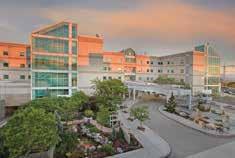
UTAH’S HOSPITALS RANK HIGH PRIMARY




HEALTHCARE INNOVATION
Utah’s Life Science Sector: A Legacy of Innovation
Utah plays a leading role in biotechnology and genetics-based breakthroughs. The state is home to more than 750 life science companies employing roughly 21,000 people. The Bureau of Labor Statistics noted in 2013 that Utah had the fourth highest concentration of biomedical engineers in the nation.
Utah is highly specialized in four major subsectors of the industry:
Medical devices and equipment
Drugs and pharmaceuticals
Research, testing and medical labs
Biomedical distribution
BIOTECH RESEARCH PROJECTS AND INITIATIVES IN UTAH
The Nano Institute, the Brain Institute and the Department of Bioengineering are housed in the University of Utah’s 208,000-square-foot multidisciplinary James L. Sorenson Molecular Technology Building, a USTAR Innovation Center, which also features a nanofabrication facility and extensive microscopy and materials characterization suite.
The Huntsman Cancer Institute is noted for its contributions in identifying the genetic mutations responsible for inherited susceptibility to a number of cancers. It is also researching experimental therapeutics and is working toward early-phase clinical trials.

The University of Utah Scientific Computing and Imaging Institute is creating new image analysis techniques to enable the visualization of complex and rich scientific data. It is also home to the Center for Integrative Biomedical Computing (CIBC), which is producing open-source software tools for biomedical image-based modeling, biomedical simulation and estimation, and the visualization of biomedical data.
The Utah Telehealth Network (UTN) links patients in rural areas to healthcare providers across the state, country and the world with leading-edge telecommunications technology. UTN provides rural patients and providers with access to services that are usually available only in more populated urban areas.

A few of the leading Utah-based life science companies:
Bard Access Systems
Biofire Diagnostics
Edwards Lifesciences
Fresenius USA Manufacturing
Great Basin Scientific
Megadyne Medical Products
Merit Medical Systems
Myriad Genetics
Ultradent Products
Varian Medical Systems


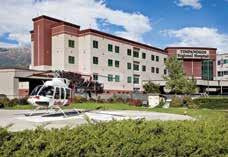

1 Day
No. 1
Utah is a one-day truck drive or less from almost every major city in the Western U.S.
The Salt Lake International Airport ranked No. 1 in North America in 2014 for on-time departures. UK-based aviation intelligence company OAG.
135.8
Total operational miles of commuter and light rail.
TRANSPORTATION
Utah has long been known as the “Crossroads of the West.” With two major interstates uniting in the heart of the state, a dynamic rail network and an expanding international airport, the state serves as a central hub for distribution and travel.
Main rail lines link Utah directly to the major seaports of Los Angeles, Oakland, Portland and Seattle.
No. 1
Utah is a central, highly costeffective distribution point for the Western U.S.
Salt Lake’s public transportation system is No. 1 in the nation for connecting people to jobs, according to the Brookings Institution.
AIR TRAVEL
Salt Lake International Airport
Delta Air Line’s Western hub.
Served by all major airlines and their affiliates.
Serves more than 90 cities with non-stop flights.
Has about 645 scheduled daily flights serving 22 million passengers each year.
Located about 15 minutes from the Salt Palace Convention Center and downtown hotels.
11 major ski resorts are within an hour of the airport.
More than 300 million pounds of air freight move through the cargo facility each year.
Salt Lake City International Airport broke ground in July 2014 on a $1.8 billion terminal redevelopment program, which will include a new terminal, parking structure and roadway to be completed by 2023.
Source: Salt Lake International Airport; FlightStats


SALT LAKE’S RELATIVE LOCATION TO
Source: www.slcgov.com/economic-development/transportation
AIRPORTS WITH COMMERCIAL SERVICE

MASS TRANSIT:
The Utah Transit Authority operates a fleet of more than 600 buses and paratransit vehicles, 400 vanpools, 146 light rail vehicles, 63 commuter rail cars and 18 locomotives.
UTA has a 1,600-square-mile service area that serves 1.8 million Utahns and includes 75 cities in six counties, one of the largest geographical service areas of any transit agency in the U.S.
TRAX light rail consists of three lines with 50 stations and carries about 80,000 riders each weekday.
FrontRunner commuter rail spans 89 miles from Ogden, through Salt Lake and to Provo, and connects with bus and light rail stops.
FrontLines 2015 is a $2.8 billion program with five UTA rail projects that will be in operation by 2015 and will add 64 miles to the network.
UTA has been chosen to host several major transportation conferences in 2015, including the American Public Transportation Association (APTA) Rail Conference. It is expected to bring nearly 2,000 global transit representatives to Salt Lake City, showcasing the recently completed FrontLines 2015 rail.
MAJOR UTAH RAIL LINES

RAIL:
Utah’s central location in the Western U.S. makes it an excellent interline switching route. Utah has about 1,350 miles of railroad track.
Union Pacific’s intermodal hub in Salt Lake can service 250,000 truck, rail and ocean-going containers annually.
Eight freight railroads operate in Utah. For passenger rail, Amtrak provides a wide range of times and connections.
More than 2,300 interstate and intrastate motor freight carriers operate in Utah.
SIGNIFICANT INTERSTATE HIGHWAYS:
I-15 runs north into Idaho and south into Arizona; ultimately, it runs from southern California to the Canadian border.
I-70 originates in central Utah and heads east through Colorado and all the way to Maryland.

I-80 runs coast to coast from San Francisco to New York.
I-215 is a major link for interstate traffic in the Salt Lake metro area.
I-84 originates in north-central Utah and runs to the Pacific Northwest.
Recent roadway projects have saved more than $23 million in user costs, according to travel time studies.
PORT OF ENTRY
Salt Lake City is home to a full-service customs port city and has a designated “Freeport Center”, just west of downtown. Goods that enter under bond may be stored in customs-bonded facilities for up to five years without payment of customs duty. If goods are exported during this period, no duty is paid. Otherwise, duties are payable at the end of the term or upon entry into U.S. markets for consumption.
$16 Billion in Exports
EXPORTS
As of November 2014, Utah’s year-to-date exports totaled $11.3 billion for 2014.
A total of 3,475 companies exported from Utah locations in 2012. The Salt Lake area experienced the highest growth in the country in exports as a share of GDP from 2003 to 2012.
UTAH’S TOP FIVE EXPORT INDUSTRIES
1) PRIMARY METALS
2) COMPUTER & ELECTRONICS
3) TRANSPORTATION EQUIPMENT
4) FOOD & KINDRED PRODUCTS
5) CHEMICALS
(Sources: World Trade Center Utah, International Trade Administration)
Carriers within Utah can provide one-day and two-day direct service to any point in the continental Western U.S.
Carriers also offer daily direct service from Salt Lake City to all major cities in the continental U.S. and Canada.
The trucking industry employs more that 13,000 workers in Salt Lake County.
The Union Pacific intermodal hub provides connections to major Eastern and Western population centers 24 hours a day, seven days a week.
2,300

EDUCATION
HIGHLIGHTS
Education is a top priority for Utah Governor Gary R. Herbert’s administration.
10/3
Utah has 10 public and three Utah-based private universities and colleges.
UTAH RESEARCH UNIVERSITIES HAVE BEEN EXTREMELY EFFECTIVE AT COMMERCIALIZING PROMISING TECHNOLOGIES.
Utah has the nation’s youngest population, which is just one reason why the state’s leaders recognize the importance of educating youth to become skilled, competitive members of the workforce. Today, education in Utah focuses particularly on science, technology, engineering and math fields (STEM), which present thegreatest opportunity for employment in the years and decades to come.
90%
Approximately 90 percent of Utahns have earned at least a high school degree.
Since 2006, the University of Utah has ranked among the top institutions in the country for startup formations powered by technology developed by faculty at a U.S. university.
(Association of University Technology Managers.)
Utah maintains a major commitment to foreign language “total immersion” classrooms offering instruction in French, German, Spanish and Mandarin. Utah conducts more Mandarin immersion classes than anywhere else in the U.S.
K-12 EDUCATION
Utah has a larger portion of its population in the 5-17 school age group (22 percent) than any other state. Utah boasts a network of public and private schools that offer high-quality primary and secondary education to students across the state. Utah has 41 public school districts, more than 1,000 schools and more than 600,000 students. The state has more than 26,600 classroom teachers and a pupil/teacher ratio of 22.1.
STUDENTS IN CONCURRENT ENROLLMENT
2007-08 28,277
2008-09
26,879
Source: Utah State Office of Education

GOVERNOR GARY R. HERBERT WITH JUST A FEW OF THE 665,000 K-12 STUDENTS IN UTAH.
EDUCATIONAL ATTAINMENT HIGHLIGHTS
UTAH’S GRADUATION RATE IS ABOVE THE NATIONAL AVERAGE.
Graduation rates have increased by 14 percentage points since 2008. The percentage of graduates has noticeably increased over the past several years for some subgroups.
English language learners’ graduation rates have increased from 38 percent in 2010 to 61 percent in 2014.
PUBLIC CHARTER SCHOOLS
SCHOOL ENROLLMENT
Population 3 and over enrolled in school
Provo School District had the fastest growing enrollment in Utah from 2013 to 2014 with an increase of 12.2 percent, followed by the charter schools, with 11.9 percent.
(Source: US Census Bureau)
Economically disadvantaged students’ graduation rates have increased from 63 percent in 2010 to 72 percent in 2014. Utah is the top state for average ACT scores among the 12 states where 100 percent of students take the test. Among eighth graders, only two states (Montana and New Hampshire) have higher science scores than Utah.
There are currently 110 charter schools in Utah serving 61,435 students. Charter school enrollment accounts for approximately 10 percent of all public school students. The combined total of the charter school population equals the fourth-largest school district in the state. Utah has four online charter schools, which serve the whole state. Nine new charter schools were approved for 2015
MEDIAN STUDENT-TEACHER RATIO
22.20 to 1 School
(Source: US Census Bureau)
UTAH
HIGHER EDUCATION
Students pursuing higher education have a diverse and compelling set of educational options to choose from. A wide range of public and private institutions cater to a broad variety of academic interests and career goals from engineering to languages (over 70 degreed language options can be found in the state).

Utah ranks second in the nation for number of degrees awarded per $100,000 spent.
UTAH STATE UNIVERSITY
27,662 students
823 full-time faculty
Utah State University delivers higher education across the state with its Logan main campus, three regional campuses, two comprehensive college campuses, and additional education centers located in all 29 counties of the state.
WESTMINSTER COLLEGE
2,295 students
130 full-time faculty
SALT LAKE COMMUNITY COLLEGE
29,537 students
332 full-time faculty
SLCC Ranked No. 3 in the nation for associate degrees obtained during 2012.
UTAH VALLEY UNIVERSITY
31,332 students
543 full-time faculty
SOUTHERN UTAH UNIVERSITY
7,656 students
255 full-time faculty
Southern Utah University ranked among the Princeton Review’s 150 Best Value colleges for 2012, 2013 and 2014. Utah State University made the list in 2012.
DIXIE STATE UNIVERSITY
8,570 students
177 full-time faculty
Western Governors University On-Line University
53,835 students 1,300 full-time faculty
INDUSTRY COLLABORATION
Prosperity 2020
Business, community and education leaders have formalized an unprecedented partnership to enhance educational performance and place Utah on the path to enduring prosperity. The movement is called Prosperity 2020 and it sets ambitious goals for public and higher education over the next decade.
Three Big Goals by 2020
PUBLIC COMMUNITY COLLEGES COLLEGES AND UNIVERSITIES (BACHELOR’S
PH.D. LEVEL RESEARCH UNIVERSITIES
1. 66 percent of Utahns will hold postsecondary degrees or training certification.
2. 90 percent of elementary students will be proficient in reading and math.
3. Utah will be a top 10 state for STEM jobs. More than $20 million dollars has been allocated for STEM training alone.
(BACHELOR’S DEGREE PROGRAMS)
WEBER STATE UNIVERSITY
26,266 students
498 full-time faculty
UNIVERSITY OF UTAH
36,226 students
1,537 full-time faculty
University of Utah ranked No. 1 in the number of spinoff companies produced in 2010 and 2011.
LDS Business College
2,200 students
183 full-time faculty
BRIGHAM YOUNG UNIVERSITY
26,672 students
1,487 full-time faculty
BYU boasts the 15th largest study abroad program in the country.
UTAH STATE UNIVERSITY EASTERN
2,048 full-time on campus students
SNOW COLLEGE
4,779 students
122 full-time faculty
Utah College of Applied Technology (UCAT)
35,972 students
229 full-time faculty
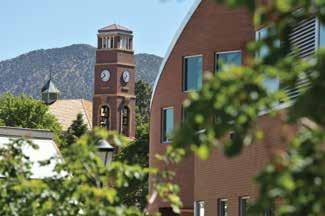

15th largest
Bridgerland ATC
Ogden-Weber ATC
Davis ATC
Tooele ATC
Mountainland ATC
Uintah Basin ATC
Southwest ATC
Dixie ATC
Applied Technology Education Utah’s applied technology colleges provide highly specialized education and training to create a robust workforce for industry needs. The Utah College of Applied Technology (UCAT) is the parent organization for eight regional campuses throughout the state.
Utah Science Technology and Research (USTAR)
USTAR is a long-term, state-funded investment to strengthen Utah’s “knowledge economy” and to foster research-related economic development in Utah’s institutions of higher learning.

USTAR provides funding that accelerates the ability of U of U and USU to recruit worldclass researchers. The initiative enabled the construction of two state-of-the-art interdisciplinary research and development facilities at the Salt Lake City and Logan campuses. These buildings have added more than 300,000 square feet to the state’s “innovation infrastructure.”
USTAR also operates outreach teams across the state to help entrepreneurs and existing companies commercialize new technology and access the resources available at higher education institutions. USTAR regional outreach has conducted hundreds of projects with emerging businesses in 20 out of 29 counties, helping more than 40 new companies launch and new products to reach the market.
BRIGHAM YOUNG UNIVERSITY ENTRANCE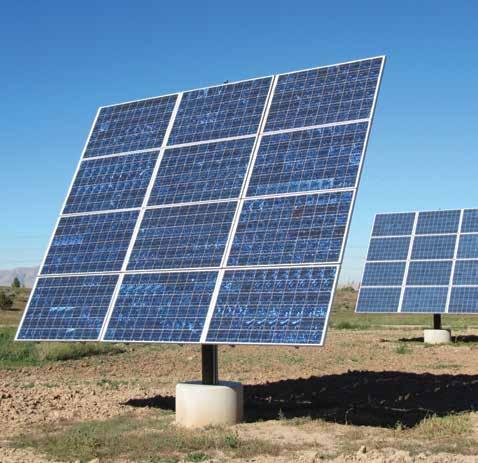
ENERGY
HIGHLIGHTS
Lowest
Utah’s electric power and natural gas rates are among the nation’s lowest.
2015-16 predominantly in Iron & Beaver Counties, more than 750 MEGAWATTS of solar capacity will be constructed! Leading solar developers involved include SunEdison, the world’s largest developer of renewable energy, as well as Scatec Solar North America and Juwi Solar, Inc. Governor’s Office of Energy Development
Abundant
The State of Utah boasts one of the least costly and most stable energy supplies in the nation. Offering a combination of traditional energy resources coupled with renewable resources, Utah is leading the way toward energy independence.
Utah is endowed with abundant natural gas resources.
Utah is a net energy exporter, exporting 31 percent of the energy that it produces. 31%
$5.3 Billion
Energy is conservatively estimated to be a $5.3 billion industry in Utah.
MOVING UTAH’S ECONOMY FORWARD
Energy is a $5.3 billion industry in Utah, generating $543 million in state and local revenues.
Energy generates $70 million directly for education through the Utah School and Institutional Trust Lands Administration.
There are more than 17,000 direct energy jobs in the state. This does not count jobs in other industries that only exist because of the direct energy jobs.
Energy is estimated to be 1.4 percent of Utah’s employment, but 2.6 percent of the earnings.
UTAH EMPLOYMENT AND REVENUE
More than 98% of the energy produced in Utah is derived from oil, gas and coal. 98%
UTAH’S ENERGY PRODUCTION BY THE NUMBERS:
Utah has a rich history developing traditional fossil fuel energy resources. Today, state leaders have positioned Utah to continue its legacy as an energy producer, focusing on a combination of traditional and renewable energy resources.
CONVENTIONAL
ENERGY: COAL, NATURAL GAS, OIL COAL:
157 million tons
Utah’s coal-fired power plants produce almost 80% of the electricity generated in Utah.
Utah has eight active coal mines.
Utah has approximately 157 million short tons of economically recoverable coal. (Utah Geological Survey)
Utah ranks 14th in the nation in the production of coal at 17.942 million tons for 2014..
NATURAL GAS:
7.8 trillion cubic feet
At current rates of production, Utah has 18 years of gas or 7.8 trillion cubic feet. (Energy Information Administration)
Utah produces about twice as much natural gas as it consumes and exports a large amount of natural gas to surrounding states.
Utah ranks as the 10th largest onshore producer of natural gas in the country (2012).
Natural gas makes up approximately 45% of Utah’s total produced energy resources, and accounts for 27% of the energy consumed.
46.6 percent of Utah’s energy comes from natural gas, about 1,138 trillion Btu
OIL:
504 million barrels
Utah is estimated to have the 8th largest proven reserves among states. At current rates of production, Utah’s 504 million barrels of reserves will last almost 20 years.
Utah has five refineries, with over 150,000 barrels per day of refining capacity for gasoline, diesel, jet fuel and related products. In 2013, Utah ranked as the 11th largest producer of crude oil in the United States.
While Utah is an overall net exporter of energy, it imports approximately 56% of the crude oil processed here.
BEYOND TRADITIONAL ENERGY RESOURCES
Utah has a rich source of unconventional energy resources, including oil shale, oil sands and uranium. The state is also moving forward with many renewable energy initiatives.
Oil Shale:
The greatest known deposits of oil shale in the world are found in the Green River Formation in the Uintah Basin in Northeastern Utah (including parts of Wyoming and Colorado).
77 billion barrels of oil located in Utah’s oil shale could be potentially economically extracted. (Utah Geological Survey)
Oil Sands:
Most of the United States’ oil sand resources are concentrated in Eastern Utah in the Uintah Basin
Utah’s oil sands are estimated to contain 15 billion barrels of recoverable oil. (Utah Geologic survey)
Uranium:
Utah is home to the nation’s only licensed and operating uranium mill in the U.S., located south of the community of Blanding.
Utah’s high-tech manufacturing industry is contributing to new nuclear technologies that have the potential to address many of the environmental and safety concerns related to nuclear energy generation.
Renewable Energy:
Utah was one of only six states included in the Department of Energy’s Solar Programmatic Environmental Impact Statement.
In 2014, Utah will see the commencement of construction on its first utility-scale solar project.
Utah boasts two successful utility-scale wind projects, a 19 MW project in Spanish Fork and a 306 MW project near Milford.
Utah is one of the nation’s only states to have a utility-scale geothermal resource, and currently is ranked No. 4 with respect to total geothermal production.
In 2014, 16 new commercial, utility-scale, renewable energy facilities were proposed.
Utah has a voluntary goal of using cost-effective eligible renewable energy resources to provide 20 percent of the state’s 2025 adjusted retail electric sales.
In 2013, 3.7 percent of net electricity generation came from renewable resources.
Governor Gary R. Herbert’s administration has developed a 10-Year Strategic Energy Plan to address energy independence and economic development needs.

UTAH’S RENEWABLE ENERGY RESOURCES

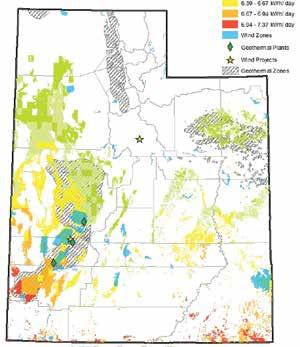
(Source for all charts/graphs: Utah Office of Energy Development)

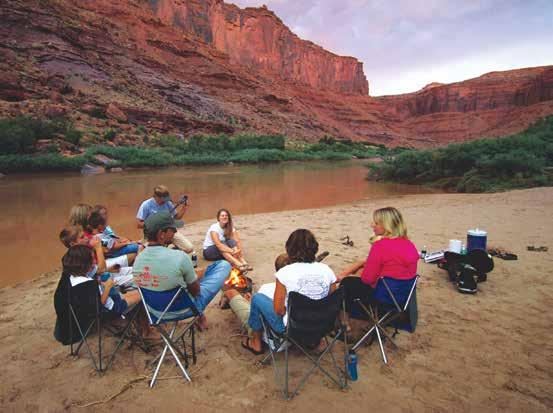
POPULATION
HIGHLIGHTS
Largest
Utah’s average household size, 3.17 persons, is the largest in the U.S.
No. 1
Utah’s population is young, dynamic and growing. The state has the third-fastest-growing population in the nation. It also boasts the nation’s highest fertility and birth rates, youngest median age and the second-highest net in-migration rate. The Beehive State’s growing, well-educated population has helped to build one of the nation’s strongest and most dynamic economies.
Utah’s fertility rate of 2.37 per woman ranks first nationally.
No. 1
30.2
Utah’s median age of 30.2 is the youngest in the U.S.
Utah ranks No. 1 nationally in percentage of married couple families (60.6) and in households with at least one child under age 18 (42.2).
UTAH HAS A POPULATION OF 2,942,902, UP 6.5% FROM 2010 (COMPARED TO 3.3% GROWTH NATIONWIDE).
POPULATION FAST FACTS
(Source: 2013-14 U.S. Census Quick Facts)
GROWING IN DIVERSITY
Utah, along with the rest of the nation, is becoming more racially and ethnically diverse. According to the United States Census Bureau, more than 22% of the nation’s population is classified as a minority, while Utah’s share is just over 8%.
90%
COLLECTIVELY, UTAH RESIDENTS SPEAK 90% OF THE WORLD’S WRITTEN LANGUAGES 60% of all public school students study a world language.
8.8% of Utah’s population is under 5 years old (nation: 6.3%).
Hispanic or Latino: 13.4% (nation: 17.1%) 6.5% 3.3%
30.9% of Utahns are under 18 years old (nation: 23.3%).
49.7%
Females make up 49.7% of Utah’s population (nation: 50.8%).

RACE:
White alone (census descriptions): 91.6% (nation: 77.7%)
Black or African American alone: 1.3% (nation: 13.2%)
American Indian and Alaska Native alone: 1.5% (nation: 1.2%).
Asian alone: 2.3% (nation: 5.3%).
Native Hawaiian and Other Pacific Islander alone: 1.0% (nation: 0.2%).
Two or More Races: 2.3% (nation: 2.4%).
(Sources: Economic Development Corporation of Utah, 2013-14 U.S. Census Quick Facts)
38,360 Utah is projected to add 38,360 people to its population in 2015 through natural increase (births less deaths).
Source: 2014 Utah Economic Outlook, Governor’s Office of Management and Budget
6 Million
By 2060, Utah’s population is projected to be more than 6 million people— double the population of 2015.
Source: Utah Population Estimates Committee
UTAH’S 2014 POPULATION GROWTH RATE 1.7% .08%
NATIONAL 2014 POPULATION GROWTH RATE
MOST YOUTHFUL STATE
Utah is home to one of America’s most youthful states, which contributes to the state’s
UTAH’S MEDIAN AGE IS THE COUNTRY’S YOUNGEST: 30.2 NATIONAL MEDIAN AGE:
37.3
UTAH’S MOST POPULATED CITIES
17.6
12.5
Utah has the highest birthrate in the country: 17.6 live births per 1,000 total population in 2013. U.S. birthrate: 12.5 per 1,000 population in 2013.
Source: U.S. Department of Health and Human Services
UTAH’S FASTEST-GROWING CITIES (POPULATIONS OVER 5,000)
(Source: 2015 Economic Report to the Governor, Utah Economic Council)

HIGHLIGHTS
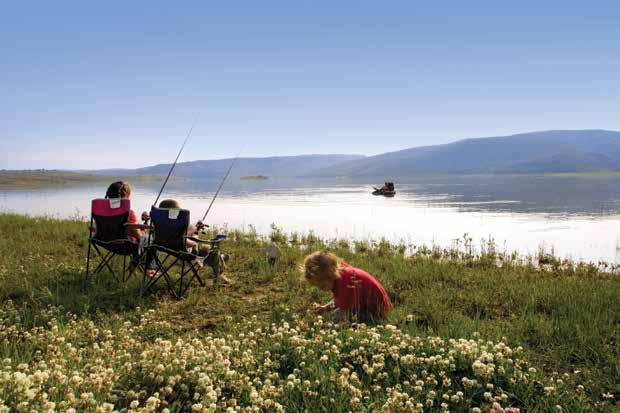
QUALITY OF LIFE
Utah is home to five national parks, seven national monuments, two national recreation areas, five national forests and 43 first-class state parks. 14
Life in Utah is good. The state offers a mix of culture, history and natural beauty that few places can match. Utah is home to world-class skiing, multiple national parks and national forests, the world’s premier independent film festival, as well as broad range of music venues, water parks, athletic teams and much more. All of this makes Utah not only a great place to do business, but a great place to live.
Utah has 14 world-class ski resorts, 11 within a one-hour drive from the
125,000
The Tony Award-winning Utah Shakespeare Festival draws more than 125,000 visitors each year.
The Sundance Film Festival, which takes place each January in Park City, showcases the world’s best independent filmmaking and draws more than 30,000 visitors and celebrities from around the world, along with another 15,000 locals.

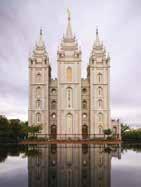

A SAMPLING OF UTAH ATTRACTIONS
Temple Square
One of Utah’s top tourist destinations. Attractions include the iconic Salt Lake Temple and the Church History Museum. visittemplesquare.com
Utah’s Hogle Zoo
Covering 42 acres, the zoo boasts more than 800 animals. hoglezoo.org
Loveland Living Planet Aquarium
The aquarium is home to 4,000 animals and 450 species. thelivingplanet.com
Lagoon Amusement Park
This amusement park has nearly 50 rides, along with games and a water park. lagoonpark.com

Clark Planetarium
The planetarium features space exhibits, educational shows and current movie releases in its IMAX theatre. clarkplanetarium.org
Natural History Museum of Utah
This beautiful museum showcases Utah’s natural history with artifacts, dinosaurs exhibits, science displays and hands-on activities. nhmu.utah.edu

Antelope Island
The largest island in the Great Salt Lake, Antelope Island is a prime destination for camping, hiking, biking, horseback riding and viewing wildlife. stateparks.utah.gov/parks/ antelope-island
Red Butte Garden
The botanical gardens and arboretum sit on over 100 acres, and hosts many concerts and events. redbuttegarden.org

Miller Motorsports Park
This state-of-the-art road racing facility caters to automobiles, motorcycles and karts. millermotorsportspark.com
Thanksgiving Point
The institute encompasses museums, gardens, restaurants, activities and events. thanksgivingpoint.org
AN IDEAL CLIMATE
UTAH BOASTS A FOUR-SEASON CLIMATE WITH LOTS OF SUNSHINE AND LOW HUMIDITY.
Mountain ranges protect the Salt Lake metropolitan area from harsh weather and yet leave over 300 inches of snow in the mountains each year..
Geography encompasses mountains and fertile valleys, arid deserts, sand dunes and thriving pine forests.
Average daytime high temperatures range from 37 degrees in January to 93 degrees in July.
RANKINGS
No.5 Healthiest
Utah ranked No. 5 among America’s healthiest states by the United Health Foundation in 2014. Utah also ranked No. 1 in the quality of healthcare and 4th lowest in cost.
(American Heart Association)
FOUR-SEASON RECREATION
Mountain biking Cross-country skiing Kayaking
ATV riding Ice climbing Boating
Rock climbing Snowshoeing Jet skiing
Road cycling Snowmobiling Scuba diving
Hunting Sledding/tubing Parasailing
Horseback riding Ice skating Ice fishing
Bird/wildlife watching Snowkiting Houseboating
Golf Ice fishing Swimming
Utah cities in Kiplinger’s Personal Best Cities for Every Age, 2012: Ogden-Clearfield
Provo-Orem
Salt Lake City
St. George
Utah has ranked within the top 5 of Kiplinger’s 10 States with the Biggest Rate of Job Growth in the past three years.
Utah ranked No. 4 in the national Gallup Healthways Well-Being Index for 2012.
Provo-Orem has the highest Well-Being Index score in the U.S. across 189 communities, according to the Gallup Healthways Well-Being Index for 2013.
A SAMPLING OF UTAH ATTRACTIONS
Ballet West
One of America’s leading ballet companies. balletwest.org
Utah Opera
Performs four annual productions in the Capitol Theatre. utahopera.org
Utah Symphony
Performing more than 70 subscription concerts annually in Abravanel Hall. utahsymphony.org
Repertory Dance Theatre
Dedicated to the creation and performance of modern dance. rdtutah.org
Ririe-Woodbury Dance Company
Commissions and performs original works. ririewoodbury.org
Pioneer Theatre Company
Produces major musicals and works by contemporary playwrights. pioneertheatre.org


Hale Family Theatre
A full theatre in the round that produces up to 10 new professional shows each year. hct.org
Tuachan
An outdoor professional stage set in the Red Rocks of St. George hosting Broadway productions and events each season.

WORLD-CLASS DINING
Salt Lake City has been named one of Zagat’s Up-and-Coming Food Cities Around the U.S. thanks to an emerging farm-to-table culture and a growing base of award-winning local producers like Creminelli Fine Meats, Slide Ridge Honey and Honey Wine, Snowy Mountain Sheep Creamery, Rockhill Creamery, Beehive Cheese, Crumb Brothers Bakery and Amano Artisan Chocolate, as well as statewide local pastured poultry and meat products and dozens of farmers markets.
In addition, several homegrown Utah restaurants have been featured on the Food Network & Travel Channel:
Readers of SKI magazine ranked two Utah resorts in the top 15 resorts in the West for 2015: No. 2 Deer Valley No. 7 Park City Mountain Resort No. 14 Canyons
SKI RESORT COMPARISON CHART
Source: Ski Utah, www.skiutah.com
Salt Lake Acting Company
Supports emerging playwrights by commissioning and producing new plays. saltlakeactingcompany.org
Tabernacle Choir and Orchestra
Performing each Sunday in Salt Lake City and holding open rehearsals each Thursday night on Temple Square.
Utah Shakespeare Festival
Tony Award-winning festival that presents classic and contemporary plays. bard.org
UTAH SPORTS TEAMS
Utah Jazz NBA Basketball
Real Salt Lake MLS Soccer
Utah Grizzlies ECHL Hockey
Salt Lake Bees PCL baseball
Orem Owlz Pioneer League
Ogden Raptors Pioneer League
BYU Cougars NCAA Division I
Utah Utes PAC-12
Utah State Aggies NCAA Division I

Aristo’s Greek Cuisne
The Blue Plate Diner
Bruges Waffles and Frites
The Burger Bar
Crown Burgers
Kobe Japanese Cuisine
Les Madeleines
Moochie’s Meatballs
Lone Star Taqueria
Oh Mai Vietnamese Sandwich Kitchen
Pat’s Barbecue
The Red Iguana
Ruth’s Diner
Sammy’s Bistro
Silver Star Cafe
Shooting Star Saloon
Tin Roof Grill
LOCAL MICRO-BREWERIES
Epic Brewing Company
The Desert Edge Pub
Squatters Pub Brewery
Wasatch Brew Pub
Bohemian Brewery
Red Rock Brewing
Uinta Brewing
Moab Brewery
High West Distillery & Saloon
Ogden’s Own Distillery

Deer Valley, Utah recognized 5 times as America’s best ski resort
Canyons and Sundance were named among the five best ski resorts for families by Outside magazine in 2014.
TransWorld Snowboarding magazine ranked Park City Mountain Resort the No. 7 overall resort, the No. 8 terrain park and No. 4 pipe in North America.
Forbes magazine ranked two Utah resorts as part of its Top 10 ski resorts in North America For 2015: No. 2 Alta No. 4 Snowbird
Playing
GOVERNMENT

No. 1
Utah was ranked No. 1 by Forbes as the “Best State for Business and Careers” in 2010, 2011, 2012 and 2014.
No. 1
Pollina Corporate Real Estate ranked Utah as the No. 1 “Pro Business State” in 2012, 2013 and 2014.
Utah is known across the nation as an economic powerhouse and for its business-friendly environment. That’s no surprise considering Gov. Gary R. Herbert’s continual commitment to fostering this culture, which has positioned Utah to remain as one of the strongest and most vibrant states in the nation.
No.3
Utah ranked at No. 3 in CNBC’s “America’s Top States for Business 2014,” which is up two spots from 2013. The state also ranked at No. 4 for “Business Friendliness.”
No.5
Utah ranked No. 5 on the Milken Institute’s State Technology and Science Index.
The U.S. Chamber of Commerce’s 2014 “Enterprising States” report ranked Utah in the top six in each of its five policy categories, including economic performance (No. 3), exports (No. 3), technology and entrepreneurship (No. 4), business climate (No. 6), talent pipeline (No. 4) and infrastructure (No. 3). Utah was the only state to finish in the top 10 on all six lists—a distinction it also earned in 2013, which makes it the only state in the nation to have done this two years in a row.
100,000 / 1,000
INDUSTRIOUS LEADERSHIP
STRATEGIC LEADERSHIP: 100,000 JOBS IN 1,000 DAYS
In late 2011, Gov. Gary R. Herbert announced a goal for the state to create 100,000 jobs in 1,000 days through the support of private-sector efforts. By August 1st 2014, Utah not only met, but exceeded the challenge and reached 112,200 jobs created.
Under the direction of Gov. Gary R. Herbert, Utah has become one of the nation’s leading states, boasting unprecedented economic growth, a low unemployment rate and a strategic plan for continued prosperity.
Gov. Gary R. Herbert was listed at No. 3 among governors for job creation in 2013.
During Gov. Herbert’s administration, Utah has achieved an annual job growth rate of 2.61 percent, compared to the national average 1.53 percent.
The Washington Post proclaimed Gov. Herbert as the “most popular” governor in the country in 2014.
The state continually maintains an AAA bond/credit rating from Moody’s, Fitch and Standard & Poor’s, and was one of only 15 states to achieve this rating in 2014.
UNEMPLOYMENT RATE
3.9%
UTAH’S CITIES AND COUNTIES ALSO CONTRIBUTE TO UTAH’S ECONOMIC DYNAMISM.
Three cities were named in the 2014 “Best Performing Large Cities” report by the Milken Institute: Provo-Orem (No. 3), Salt Lake City (No.6) and Ogden-Clearfield (No. 35).
Provo City was ranked No. 3 on Forbes’ 2014 list of “Best Places for Business and Careers.” Salt Lake City ranked No. 8 and Ogden ranked No. 11.
Three Utah cities were listed among the “6 Top Cities for High-Paying Jobs” by Payscale in 2013: Salt Lake City (No. 1), Provo-Orem (No. 5 and Ogden-Clearfield (No. 6).
BUSINESS-BUILDING INCENTIVES
Utah provides nearly a dozen different incentives to businesses that expand or relocate to the Beehive State. A sampling of these incentives is listed here:
Economic Development Zone Tax Increment Finance (EDTIF)
A post-performance, refundable tax credit for up to 30 percent of new state revenues (sales taxes, corporate taxes and withholding taxes paid to the state) over the life of the project (typically five to 10 years). It is available to companies seeking relocation and expansion of operations to the state of Utah.
Industrial Assistance Fund (IAF)
A post-performance grant for the creation of high-paying jobs in the state. Requirements include creating new, high-paying jobs that pay at least 125 percent of the county average wage and creating new jobs in rural communities paying at least 100 percent of the county average wage.
Rural Fast Track Program (RFTP)
A post-performance grant available to small companies in rural Utah. The program provides an efficient way for existing small companies to receive incentives for creating jobs in the rural areas of the state and to further promote business and economic development.
Motion Picture Incentive Fund
A post-performance rebate of production dollars spent in the state of Utah. An approved production is eligible for a rebate up to 25 percent on every dollar spent in the state. To qualify, a production must spend a minimum of $1 million in the state. The incentive is offered as either up to 25 percent tax credit or a 20 percent cash rebate for qualifying productions. Productions under $1 million may be eligible for a 15 percent cash rebate.
STRATEGIC INVESTMENTS
Technology Commercialization and Innovation Program (TCIP)
TCIP is a state-funded grant and mentoring program that was developed to commercialize cutting-edge technologies developed at Utah’s colleges and universities. In 2014, changes to the TCIP statute additionally permitted funding small businesses that are commercializing technology developed independently of a Utah higher education institution. New for 2015 is an emphasis on applicants who have won federal Small Business Innovation Research (SBIR) or Small Business Technology Transfer Research (STTR) grants.
Managed by GOED, the TCIP provides grants ranging in size from $25,000 to $100,000.
WORLDWIDE CONNECTIVITY
The Governor’s International Trade and Diplomacy Office (ITDO) assists Utah companies in developing markets for their products and services in foreign countries.
IN FY2013, ITDO PROVIDED ASSISTANCE TO ABOUT 700 COMPANIES THROUGH INDIVIDUAL MEETINGS.
ITDO trained more than 1,500 individuals on international trade issues through more than 50 training events in FY2013.
In 2014, ITDO facilitated trade missions to various countries, such as Brazil, China and Turkey.
ITDO helped host more than 20 Ambassadors and Consul Generals from around the world in 2013.
GOED and ITDO also work closely with World Trade Center Utah (WTC Utah) to enrich and develop Utah’s global network. WTC Utah is a licensed and certified member of the World Trade Centers Association headquartered in New York City.

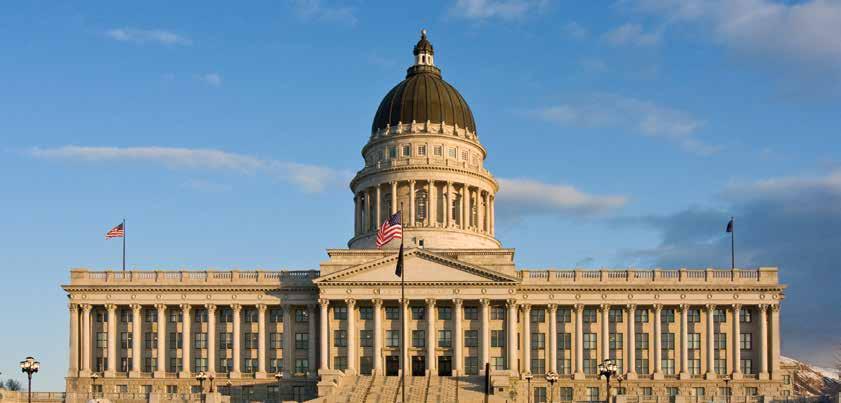
ORGANIZATION
Beaver County Economic Development
Box Elder County Economic Development
Cache Valley Chamber of Commerce
Carbon County Economic Development
Daggett County Economic Development
Davis County Economic Development
Duchesne County Economic Development
Emery County Economic Development
Garfield County Economic Development
City of Moab Economic Development
Cedar City – Iron County Economic Development
Juab County Economic Development Agency
Kane County Economic Development
Millard County Economic Development Assoc.
ADDRESS PHONE WEBSITE
105 East Center Street, P.O. Box 789 Beaver, UT 84713 (435) 438-6490 beaver.utah.gov
01 South Main Street Brigham City, UT 84302 (435) 734-3331 boxeldercounty.org
160 North Main Street, Suite 100 Logan, UT 84321 (435) 752-2161 cachechamber.com
760 East 100 North Price, UT 84501 (435) 636-3295 carbon.utah.gov/econdev
95 North 100 West Manila, UT 84046 (435) 784-3218 daggettcounty.org
61 South Main Street Farmington, UT 84025 (801) 451-3278
daviscountyutah.gov/economic_development
50 East 200 South Roosevelt, UT 84066 (435) 722-4598 uintabasin.org
95 East Main St., #297 Castle Dale, UT 84513 (435) 381-5576 emerycounty.com
55 South Main Street Panguitch, UT 84759 (435) 676-1100 garfield.utah.gov
217 East Center Street Moab, UT 84532 (435) 355-0644 moabcity.org
10 North Main Street Cedar City, UT 84720 (435) 586-2770 cedarcity.org
160 North Main Street, Nephi, UT 84648 (435) 623-3415 juabbusiness.com
30 North Main Street, Suite 201 Kanab, UT 84741 (435) 616-5858 kane.utah.gov
71 South 200 West Delta, UT 84624 (435) 864-1407 millardcounty-ecdev.com
Morgan County Economic Development (Better City) 1100 Country Hills Drive, #300 Ogden, UT 84403 (801) 920-0000 http://bettercity.us/our-team/ Piute County Economic Development
Rich County – Bear Lake Regional Commission
Salt Lake County Economic Development
San Juan County Economic Development
550 North Main Street Junction, UT 84740 (435) 577-2949 piute.org
69 N. Paradise Pkwy. Building B Garden City, UT 84028 (435) 946-2198 bearlakeregionalcommission.org
2001 S. State Street, Ste. S2100 Salt Lake City, UT 84114 (385) 468-4866 upgrade.slco.org
117 S. Main Street P.O. Box 490 Monticello, UT 84535 (435) 587-3235 utahscanyoncountry.com
Sanpete County Economic Development Assoc. 191 North Main Street Manti, UT 84642 (435) 835-4321 sanpete.com
Sevier County Economic Development
250 North Main Street, Rm 116 Richfield, UT 84701 (435) 893-0454 sevierutah.net
Summit County Economic Development P.O. Box 128 Coalville, UT 84017 (435) 336-3220 summitcounty.org
Tooele County Economic Development
Uintah County Economic Development
Utah County Business Development
Heber Valley Tourism and Economic Development
47 South Main Street Tooele, UT 84074 (435) 843-3150 co.tooele.ut.us
152 East 100 North Vernal, UT 84078 (435) 781-6767 vernalutah.org
815 West 1250 South Orem, UT 84058 (801) 863-7546 utahvalleydata.com
475 North Main Street Heber City, UT 84032 (435) 654-3666 gohebervalley.com
Washington County Economic Development Council 1071 E. 100 S. Building C, Ste 7 St. George, UT 84770 (435) 652-7750 siteselectplus.com
Wayne County Economic Development
Weber County Economic Development Corp.
For More Information:
18 South Main Street P.O. Box 189 Loa, UT 84747 (435) 836-1315 waynecountyutah.org
2380 Washington Blvd., Ste. 250 Ogden, UT 84401 (801) 399-8414 weberedp.com
The Utah Governor’s Office of Economic Development
60 E. South Temple, Suite 3rd Floor Salt Lake City, Utah 84111 (801) 538-8680 www.business.utah.gov

